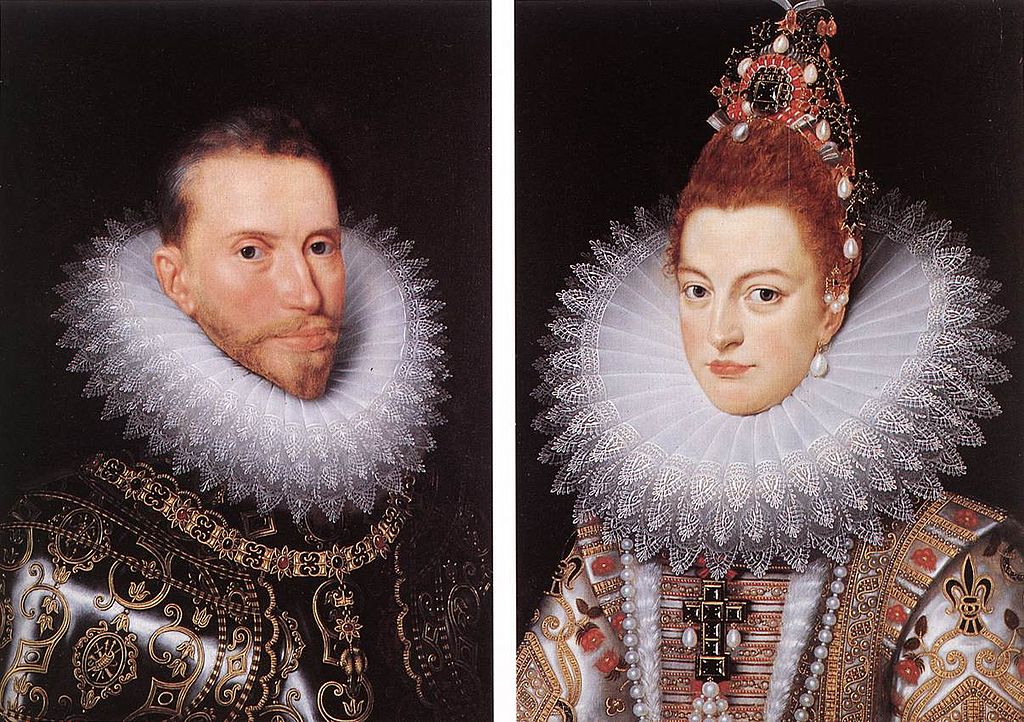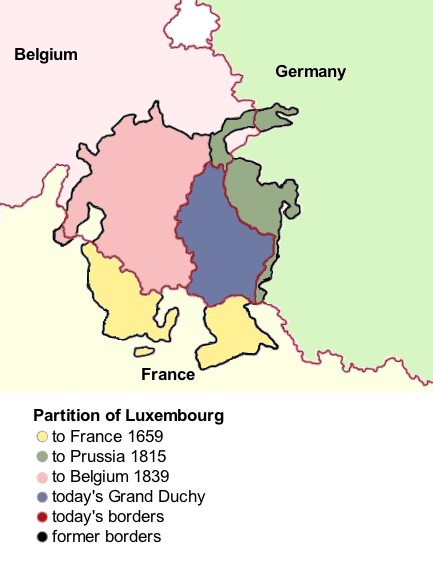 Luxembourg (Lëtzebuerg
in Luxembourgish, Luxembourg in French, Luxemburg in German) is 600,000 people country in the western part of Europe. It belongs to the European Union (EU) and it's surrounded by France, Belgium
and Germany. The population has a mostly Catholic religious tradition;
the official languages are Luxembourgish, French and German (although most of the people
can speak fluent English). The official currency is the euro (€). The main city, and the capital city, of Luxembourg is Luxembourg City, with other important cities like Esch-sur-Alzette or Dudelange.
Luxembourg (Lëtzebuerg
in Luxembourgish, Luxembourg in French, Luxemburg in German) is 600,000 people country in the western part of Europe. It belongs to the European Union (EU) and it's surrounded by France, Belgium
and Germany. The population has a mostly Catholic religious tradition;
the official languages are Luxembourgish, French and German (although most of the people
can speak fluent English). The official currency is the euro (€). The main city, and the capital city, of Luxembourg is Luxembourg City, with other important cities like Esch-sur-Alzette or Dudelange.What can I visit in Luxembourg?
Here you have a list of places in Luxembourg that are worth to be seen. Check them out and find out the ones you want to visit:History
 |
| Siefried I, first count of Luxembourg |
 |
| Albert VII and Isabella Clara Eugenia |
 |
| Partition of Luxembourg |
 |
| Images of the Battle of the Bulge |
Unforgettable experiences
This places and experiences are a must if you want to discover and understand Luxembourg. This is my top 5: |
| Luxembourg City |
- Luxembourg City: biggest Luxembourgish city and capital of the country, Luxembourg City is the main attraction of the country and there are many things for sightseeing. It's historical importance can be observed just by walking along the Chemin de la Corniche or exploring the Bock Casemites. It has also some interesting museums and, luckily, it isn't very touristic so you can enjoy it without many people (especially during the weekend, when business people go back to their places).
- Echternach: this small town in the German border has the only remaining Dancing procession in Europe, making it worth a visit just for that. But it also has the most important abbey in the country (Echternach Abbey), whose influence was huge. It's historic center is well-preserved and makes it a very beautiful town.
- Vianden: following Victor Hugo's way in Luxembourg we reach this small town where he lived some time. Together with a very nice castle and Victor Hugo's house-museum there are many other things to do in the town and surroundings.
- Moselle Valley: this valley which continues in Germany and France is perfect to enjoy the nature and taste the most famous wines in Luxembourg, crémant. But there are more things to explore in this valley like the well-known town of Schengen (famous for the EU treatment signed there) or enjoying the nearby spa town of Mondorf-les-Bains.
- Wiltz: this town is the entrance to Ardennes region and the town itself is pretty interesting with its castle and museums about brewery and tannery. In this area took place the batle of the Bulge and there are some museums about it. Near it can be found Clervaux, another interesting town, and some nature reserves like the Natural Reserve Our or the Natural Park of Upper-Sûre.
 | |
| Vianden |
Planning your holidays
These are some possible journeys you may do in Luxembourg so visit parts of it or discover it all. Luxembourg's main sightseeing points can't be visited in less than 3 days and if you want to get deeper into Luxembourg, 5 days can be enough for it.a) 3 days tour
b) 5 days tour
How can I arrive and move within Luxembourg?
Luxembourg is very well communicated with neightbouring countries such as France, Belgium
and Germany, mainly via Luxembourg City. Luxembourg City is connected with most of the important destinations in the center of Europe. The best mean of transport to move in
the country is the train but since February 2020 every national journey in public transportation is free (just have to pay for cross-border journeys and trains in 1st class).
- Plane: there are international flights to Luxembourg City Findel Airport (the most important one in the country) from many European cities. Other nearby airports are located in Charleroi (Belgium) or Frankfurt am Main (Germany).
- Train: Luxembourg's railway system is good, with Luxembourg City's train station as a hub where the lines radiate out in all directions. There are also trains to international destinations like Metz and Paris in France, Brussels in Belgium or Trier in Germany.
- Bus: buses are less comfortable than trains and their frequence is more reduce, but it's still a good way to reach certain destinations. There are frequent buses from Luxembourg City to all the main cities and towns of the country and there are also connections among them (although less frequent). There are buses that link Luxembourg City with places such Liège, Brussels and Antwerp in Belgium; Metz, Nantes Strasbourg or Paris in France; Cologne, Frankfurt am Main, Karlsruhe or Stuttgart in Germany or Rotterdam and Amsterdam in the Netherlands.
- Car: this is almost always the most comfortable way of moving for the lack of timetables to follow. It's required to have a green card (International Insurance Card). Most of the roads in Luxembourg are in very well conditions and driving in the country is easy.
 |
| Train map of Luxembourg |
What can I eat and drink in Luxembourg?
 |
| Bounnesschlupp |
 |
| Judd mat gaardebounen |
 |
| Quetschentaart |
Talking about drinking, the most famous Luxembourgish drink is the wine (wäin), specially dry white one. They are usually produced in the Moselle Valley are and there are many varieties like riesling, rinot gris, pinot blanc, chardonnay, auxerrois, gewürztraminer, rivaner, elbling, Pinot noir and crémant de Luxembourg. The other important drink in the country is beer (béier), most of them lager, and the main brands are Bofferding, Mousel, Diekirch and Simon.
Learn some Luxembourgish
Luxembourgish is one of the 3 oficial languages of Luxembourg and is currently spoken by 400,000 people aprox. Luxembourgish language is related to German, but visitors who speak French or German won't have problems of communication because they are co-ofical too. Luxembourgish is currently spoken by 50% of the population of Luxembourg but the most common language in the Grand Duchy is French. English is also widely known and used.
These are some basic words in Luxembourgish:
| Luxembourgish | English | Luxembourgish | English |
| Moiem | Hello | Wann ech glift | Please |
| Wéi geet et dir? | How are you? | Merci | Thanks |
| Äddi | Goodbye! | Jo | Yes |
| Gudde Moien | Good morning | Nee | No |
| Gudde Owend | Good evening | Ech schwätzen Lëtzebuergesch net | I don’t speak Luxembougish |
Useful links
In case you want to look for more information about Luxembourg (https://www.visitluxembourg.com/en) or its cities, towns and places, here there's a list with some pages to get it:- Guttland (https://www.visitguttland.lu/en).
- Luxembourg City (https://www.luxembourg-city.com/en).
- Luxembourg Ardennes (https://www.visit-eislek.lu/en).
- Mullerthal (http://www.mullerthal.lu/en).
- The Moselle (https://www.visitmoselle.lu/en).
- The Land of the Red Rocks (https://www.redrock.lu/en).


